Expert’s Rating
Pros
- Sleek design
- High-quality display
- Slick Wear OS software
- Lots of health and wellness features
Cons
- Erratic heart rate sensor
- Underwhelming battery life
- Not the latest software version
- No automatic workout tracking
Our Verdict
The Xiaomi Watch 2 is a fairly standard Wear OS smartwatch, which reflects very well on its affordable price point. But unreliable heart rate data and the common Wear OS battery issues mean it might be worth spending a bit more.
How much should you spend on a smartwatch?
There are tons of cheap options out there, but if you want Android compatibility and access to third-party apps, the answer is usually a lot.
Samsung’s Galaxy Watch 6 is one of the cheapest Wear OS watches out there with a £289/$299.99 starting price, while the Pixel Watch 2 (£349/$349), Galaxy Watch 6 Classic (£369/$399.99), OnePlus Watch 2 (£299/$299) and Mobvoi TicWatch Pro 5 (£329.99/$349.99) are all more expensive.
Currently, the best affordable option is Xiaomi’s Watch 2 Pro, which starts at just £239.99. But the non-Pro version takes things to the next level. For just £169.99, the only things you really need to give up are a stainless-steel frame and cellular connectivity.
Does that make the Xiaomi Watch 2 a no-brainer if you’re looking for an affordable smartwatch? Unfortunately, as extensive testing shows, not quite, but it’s still a solid option in many ways.
However, as usual, neither Xiaomi watches are available in the US.
Design & Build
- Premium aluminium and class design
- Relatively lightweight
- 5ATM water resistance
Xiaomi is on to a winner with the design of the Watch 2. It’s a little plain, with small clock indicators on the bezel around the screen the only splash of personality, but I don’t mind that.
This minimalist look (in the black you see here or silver) makes it suitable for any occasion, and you can easily switch things up when it comes to the straps. The flexible TPU one included in the box is great for working out, but not particularly comfortable for everyday usage.
Xiaomi is on to a winner with the design of the Watch 2
However, it’s easy to swap out for Xiaomi’s official leather or braided straps, which were much more to my liking. In fact, any 22mm band should be compatible, so there are almost endless possibilities for customisation.
The build quality is a slight step down from the Watch 2 Pro, with Xiaomi opting for an aluminium frame rather than stainless steel. But it still looks and feels premium, and I prefer the lighter 36.8g chassis.
All the other dimensions are practically the same (47.6 x 45.9 x 11.8mm), so the Watch 2 is still a chunky smartwatch. Even with a comfortable band, I couldn’t ever forget it was there and didn’t enjoy wearing it while sleeping.
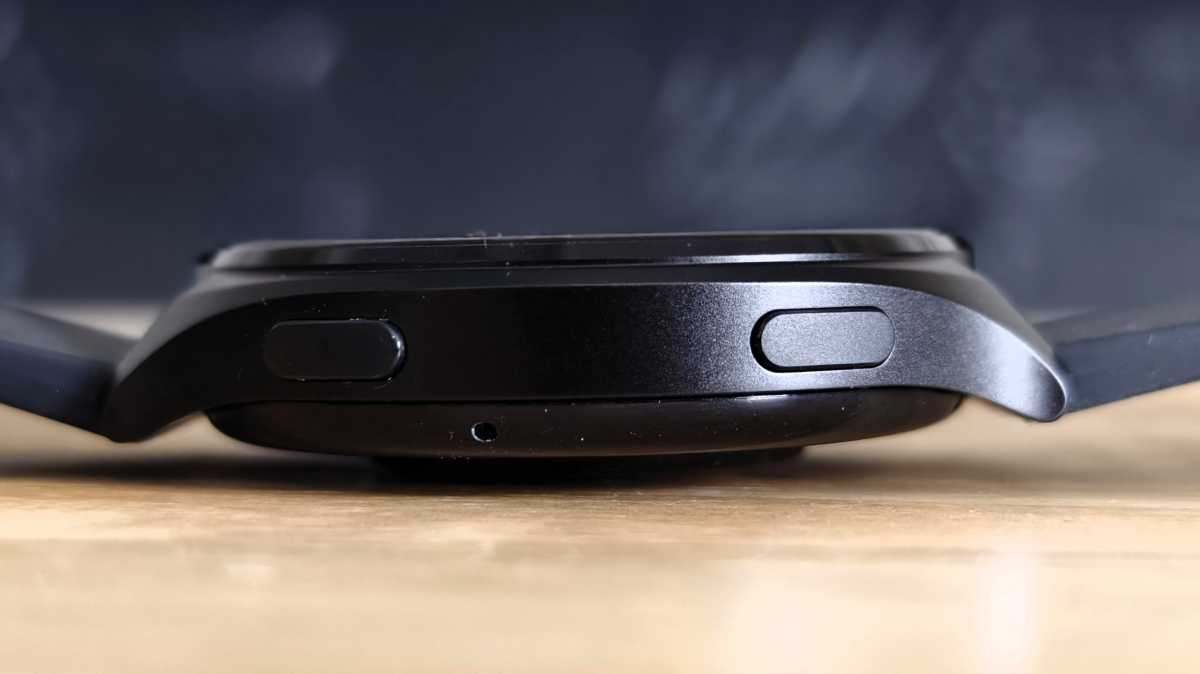
Anyron Copeman / Foundry
The bezel around the 1.43-inch screen looks good, but doesn’t rotate like on some smartwatches. Your only alternatives to touch are two physical buttons on the right side, though they’re very easy to use and customise, so it doesn’t feel like you’re missing out.
Despite the shift to an aluminium build, the Watch 2 still feels very durable. I wasn’t worried about the screen getting damaged either, even without any protection from the flat bezel or a specific Gorilla Glass for toughness.
The watch also benefits from 5ATM water resistance, meaning it can withstand pressure equal to around 50m underwater. Most people won’t take it to those extremes, but you don’t have to worry about it in the swimming pool or shower.
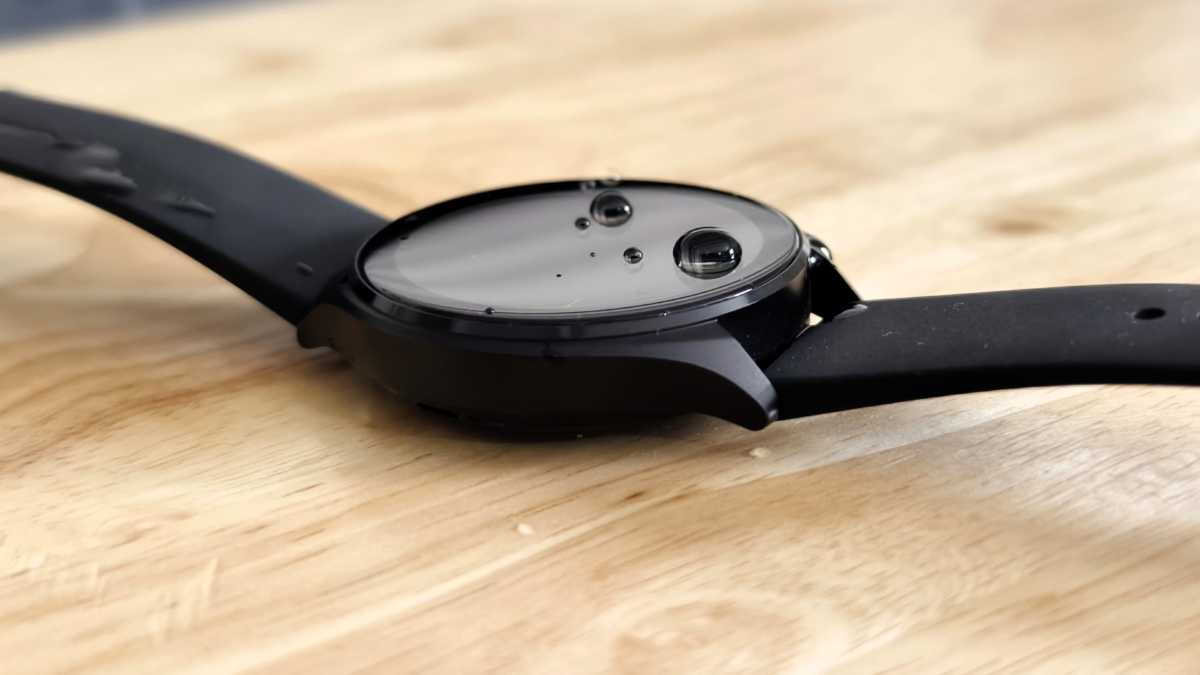
Anyron Copeman / Foundry
Screen & Audio
- 1.43-inch AMOLED screen
- Same as on Watch 2 Pro
- Decent speaker and microphone
The Xiaomi Watch 2 has the exact same display as the Watch 2 Pro, which is great news. This is undoubtedly one of the finest screens you’ll find on any smartwatch, though you will have to be a fan of a larger display.
At 1.43-inches, it’s by no means compact, which will put some people off. However, the 466 x 466 resolution is high for a screen of this size and means clarity is excellent in all conditions. That includes direct sunlight, with the display able to get plenty bright enough.
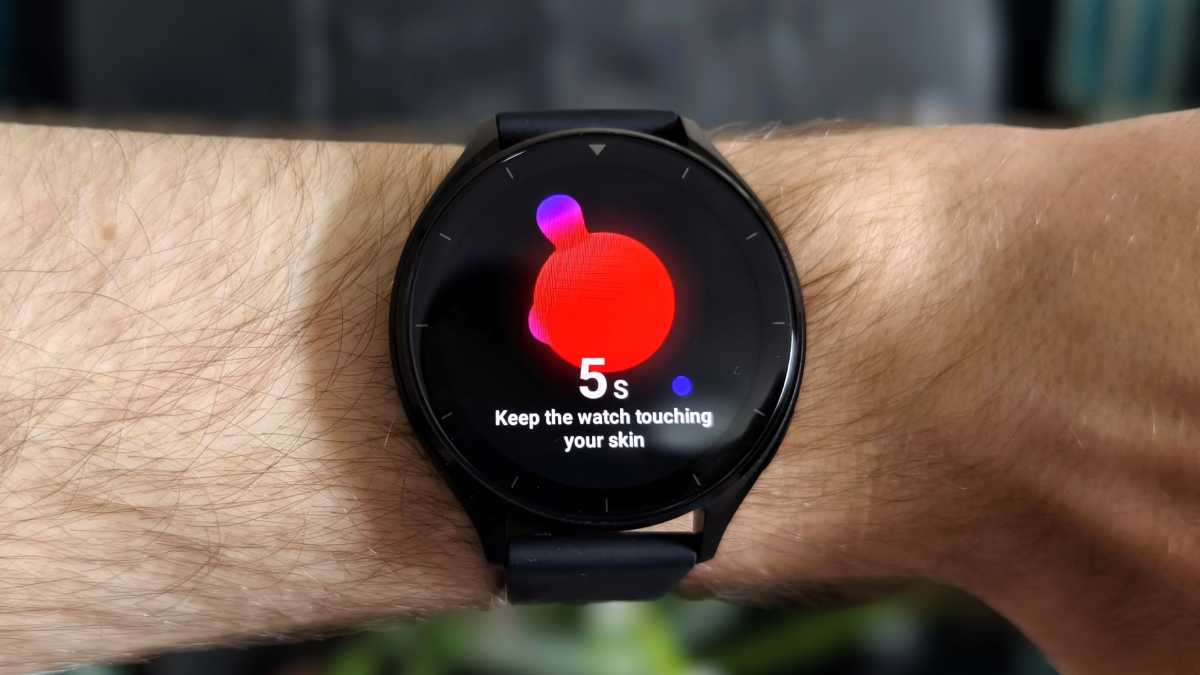
Anyron Copeman / Foundry
It’s also an OLED panel, so you get the usual combination of bright, vivid colours and rich, deep blacks. I really can’t fault the display on the Watch 2.
I’m also pleased to see audio hardware built into the watch. The built-in speaker is nothing special, but sacrifices almost all bass in favour of clarity, which I think is the right move on such a small device. However, I do wish the maximum volume was higher.
This is undoubtedly one of the finest screens you’ll find on any smartwatch
Of course, the Google Assistant support relies on the built-in microphone. It can be a little show to recognise what you’re saying at times, but accuracy was excellent. If you want to take calls directly on the watch, the other person will be able to hear you without any issues.
Specs & Performance
- Qualcomm Snapdragon W5+ Gen 1 chipset
- 2GB RAM
- Solid all-round performance
- No cellular option
Under the hood, the Xiaomi Watch 2 is powered by the Snapdragon W5+ Gen 1 processor, which remains Qualcomm’s latest and greatest for smartwatches.
The resultant performance is very good, and in line with almost all flagship Wear OS watches, but it won’t blow you away. Just 2GB of RAM means it can feel a little sluggish at times, and it’s slow to become fully responsive after being switched on which could be a pain if you’re hurriedly leaving the house.
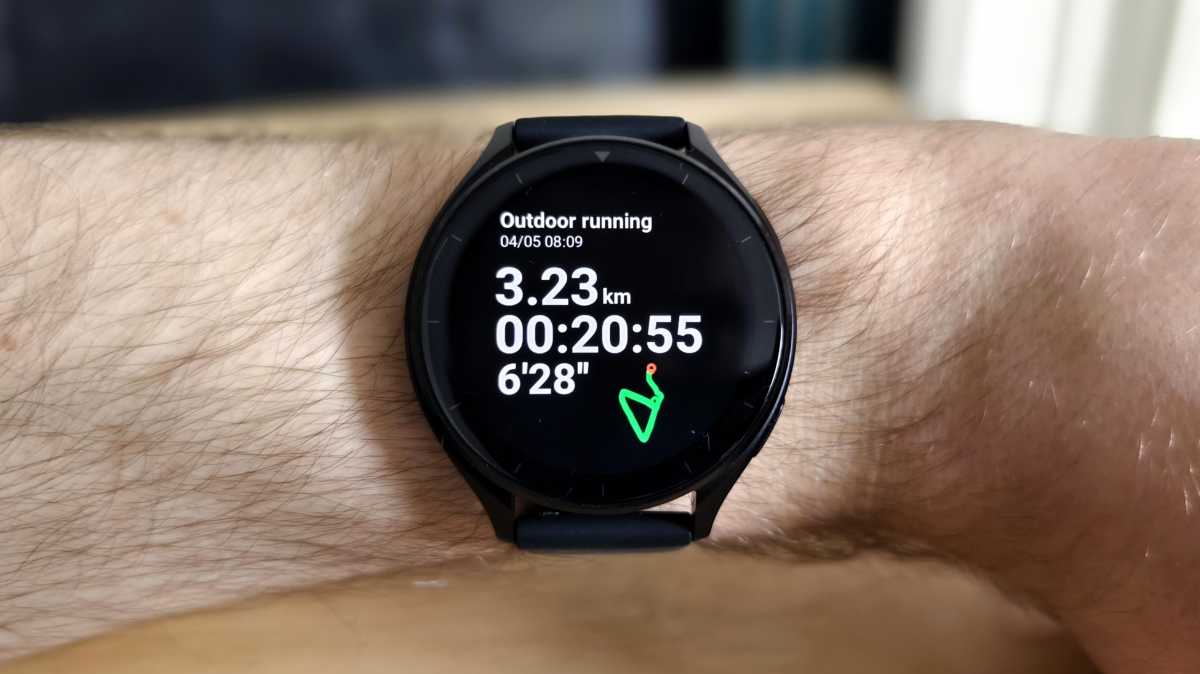
Anyron Copeman / Foundry
However, this is nothing we haven’t seen before, including from many more expensive watches.
The Watch 2 is powerful enough for easy day-to-day usage, which is the most important thing. Ultimately, to find something that feels totally smooth, you probably have to ditch Wear OS.
Performance is very good, and in line with almost all flagship Wear OS watches
The one thing you do miss out on here compared to the Watch 2 Pro is the option for cellular connectivity. With only Wi-Fi, you’ll need to be connected to your phone to receive calls and notifications, but it still works as a standalone device for tracking workouts with the built-in GPS.
That connection to your phone is via Bluetooth 5.2, which maintained a reliable connection throughout my testing time.
And 32GB of on-device storage is plenty for most people. You can download a few playlists, podcasts and audiobooks and still have more than enough room left.
Software & Features
- Wear OS 3.5
- Slick and easy to use, but Google Maps is frustrating
- Unclear update schedule
Out of the box, the Xiaomi Watch 2 runs Wear OS 3.5. Frustratingly, there’s still no word on when it might get the update to Wear OS 4, despite it being released by Google in 2023.
It’s also unclear how long Xiaomi plans to support the watch for with software updates.

Anyron Copeman / Foundry
Nonetheless, there’s still a lot to like here. Xiaomi’s tweaks to the usual Wear OS experience are limited to several of its own apps, and unlike on its smartphones, none of them are annoying.
In fact, I preferred Xiaomi’s apps for fitness, health monitoring and sleep to the Google equivalents, all of which are available via the Play Store.
One app you won’t find a Xiaomi version of is Google Maps, though I’m not convinced by its implementation here. Even on Wi-Fi, it’s totally reliant on your phone to start navigation, which doesn’t always trigger properly. And the turn-by-turn directions are sometimes unclear, meaning I had to squint at the tiny on-screen map instead.
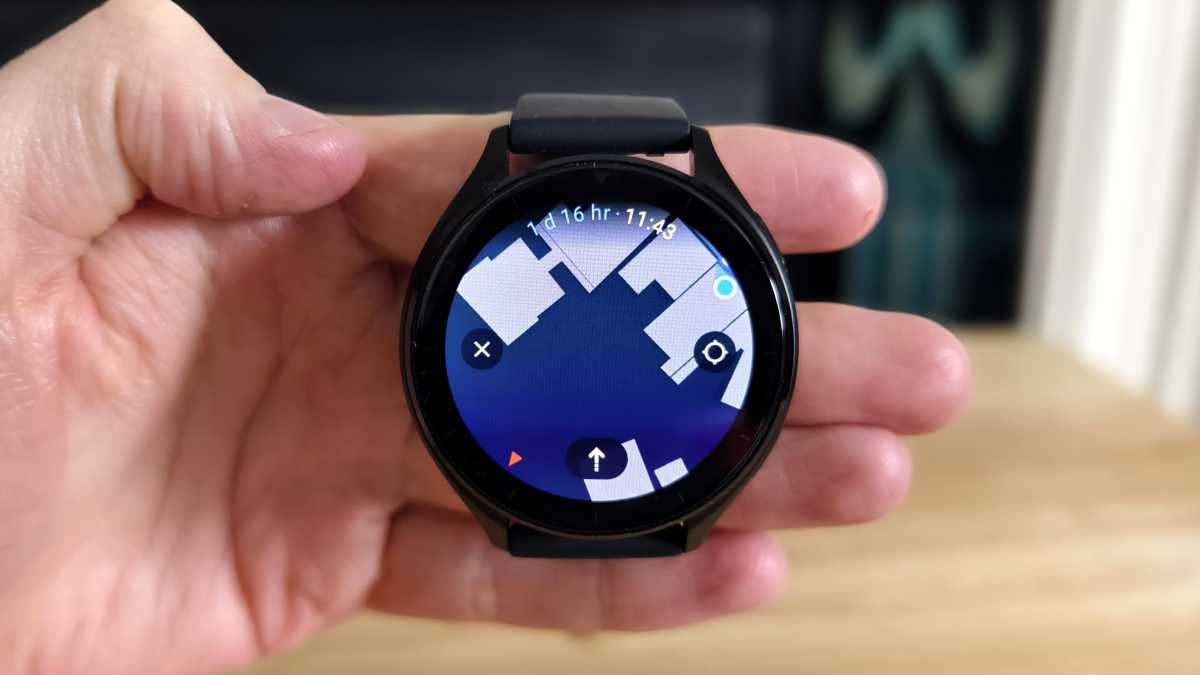
Anyron Copeman / Foundry
Similarly, Google Pay (via NFC) is very convenient but requires an annoying screen lock to work.
The selection of third-party apps available is smaller than on the Apple Watch, but it’s still the best alternative if you don’t want an iPhone. The likes of WhatsApp, Audible, Amazon Music (Spotify and YouTube Music also available) and the meditation app Calm all run very well, and more are being added all the time.
As for the general navigation experience, it’s about as slick as you’ll get on a watch. From the main watch face (which can easily be customised via a press and hold), a swipe up reveals quick settings and swipe down shows notifications – the opposite of the Pixel Watch.
As for the general navigation experience, it’s about as slick as you’ll get on a watch
Swipe left or right to move between widgets, or access a range of key functions via the physical buttons on the right side.
The top one allows you to quickly access the app drawer (one press), see recent apps (double press) or trigger the Google Assistant (press and hold). The bottom one opens your most recent app (one press), Google Pay (double press) or power options (press and hold). These can be customised, but the defaults are easy to learn and feel intuitive.
Fitness & Tracking
- Support for over 160 workouts
- Unreliable heart rate data
- Decent sleep tracking
Like almost all modern smartwatches, the Xiaomi Watch 2 is primarily a health and fitness device.
It has no fewer than six dedicated sensors: heart rate, blood oxygen, compass, accelerometer (to track movement and distance covered), gyroscope (for screen rotation and more accurate movement) and barometer (for atmospheric pressure).
It’s a comprehensive suite and enables a wide range of health-related data to be collected. But how good is it?
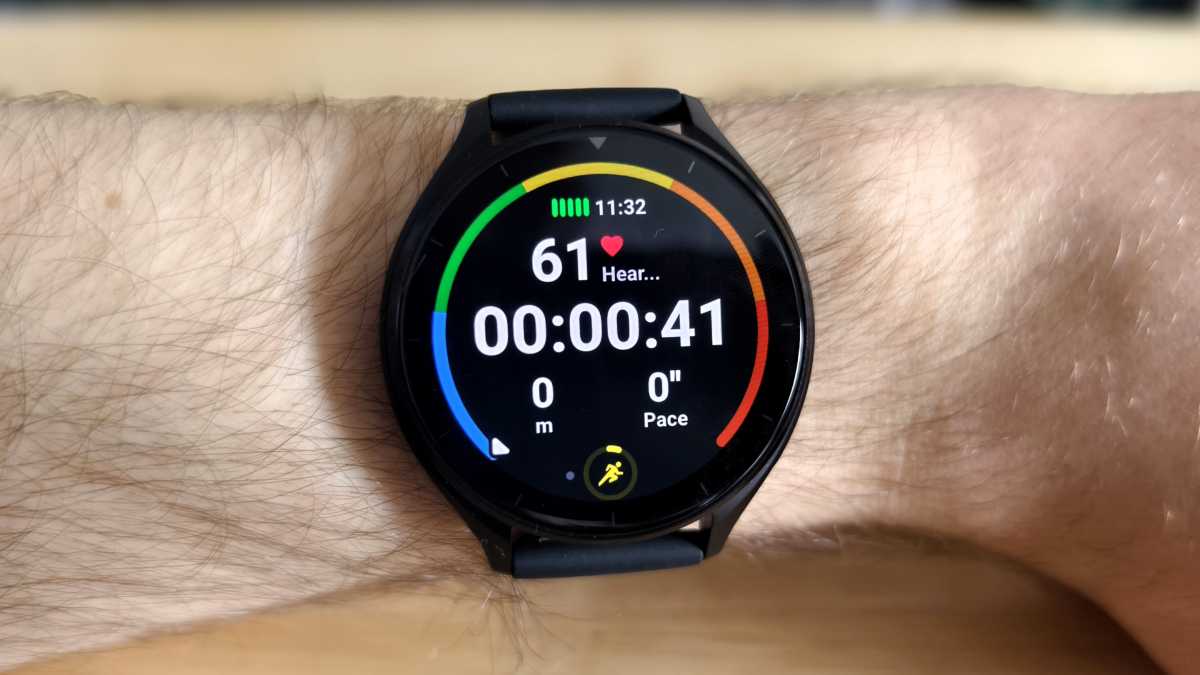
Anyron Copeman / Foundry
Let’s start with workouts. The Watch 2 can track more than 160 different types of exercise, including various pre-defined courses. However, the actual data you get varies considerably in terms of accuracy and usefulness.
With no automatic workout tracking, you’ll have to start each one manually. I did this for three different types of workouts, and swimming was undoubtedly my favourite.
Not only was the watch more comfortable to wear in the pool than on dry land, but the level of data it provided was impressive. It recognised my main stroke and length of the pool, then gave me a detailed overview of pace, stroke rate and SWOLF (an overall measure of efficiency).
As with all types of workout, it was easy to set a goal (time or distance) and be notified when I reached it.
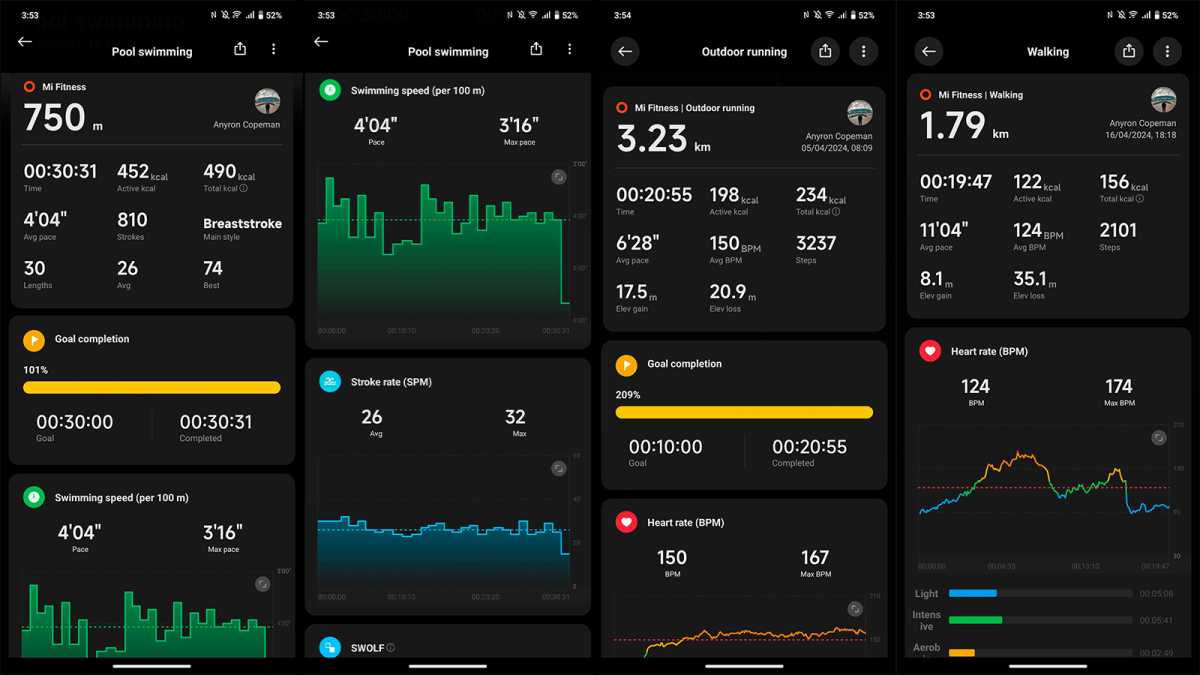
Anyron Copeman / Foundry
However, the swim tracking isn’t particularly reliant on heart rate data, which I found to be the weakest aspect of the Watch 2. A 20-minute run produced loads of useful data (albeit with no clear explanations why it was important), but I couldn’t trust the BPM scores it was showing me.
Even during a run, I noticed the reading on the watch jump around a lot, despite a similar level of exertion. While I don’t have fully accurate data to compare it to, this didn’t seem right. The discrepancies were even more dramatic while walking, which saw my heart rate jump from 85 to 150 and then slowly back down again. I wasn’t even walking that quickly.
These problems could potentially be avoided by tightening the watch strap, but I think anyone would find that clamping of their wrist to be very uncomfortable. However, unless you do that, you can’t completely trust the heart rate data.
The swim tracking isn’t particularly reliant on heart rate data, which I found to be the weakest aspect of the Watch 2
Given its reliance on your heart rate, I was concerned that sleep tracking would suffer badly. And while I can’t be sure of the accuracy, the overall ‘sleep score’ seemed to largely match how I felt the night went.
This metric uses a combination of the total time you were asleep and how long you spent in each of the three main stages (light, deep, REM) to give you a score out of 100. The advice on improving it is rather generic, though.
If you enable advanced monitoring, the Watch 2 can also monitor your blood oxygen levels to provide a ‘breathing score’. Breathing issues can be linked to conditions such as sleep apnea, so it’s useful to know.
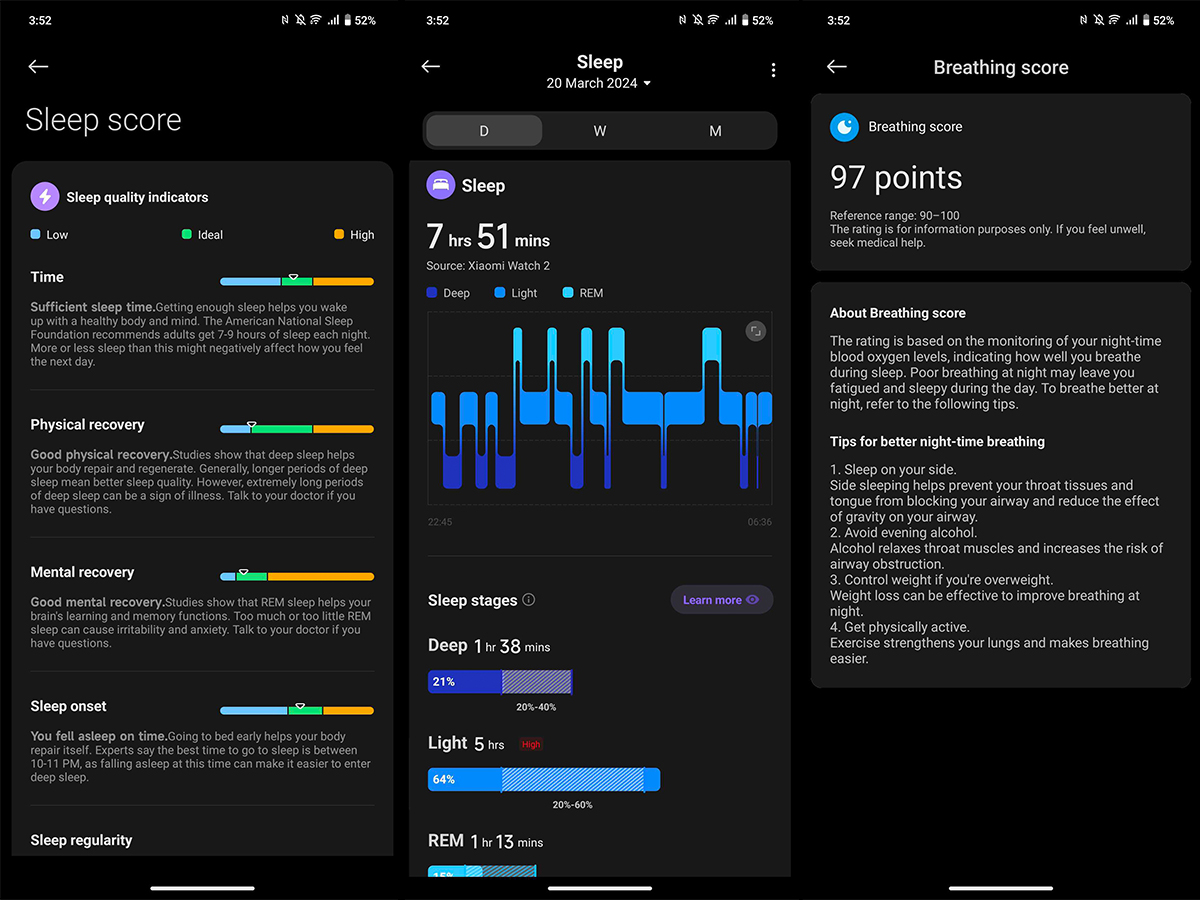
Anyron Copeman / Foundry
After wearing the Watch 2 to bed for 7 nights, you’ll even be assigned a ‘sleep animal’ which your sleep style is supposedly closely matched to.
Battery Life & Charging
- 495mAh battery
- Disappointing, one-day battery life
- Fast charging
Poor battery life is something that affects many Wear OS watches. But there are outliers if you look hard enough, such as the OnePlus Watch 2 and Xiaomi’s own Watch S3, though that runs on HyperOS instead. So, can the Xiaomi Watch 2 consider battery life a strength?
Unfortunately not. In fact, poor battery life is one of the main reasons not to buy the Watch 2.
It has the same 495mAh battery as the Watch 2 Pro, which is a decent capacity on paper, but I still only just about made it through one day on a full charge.
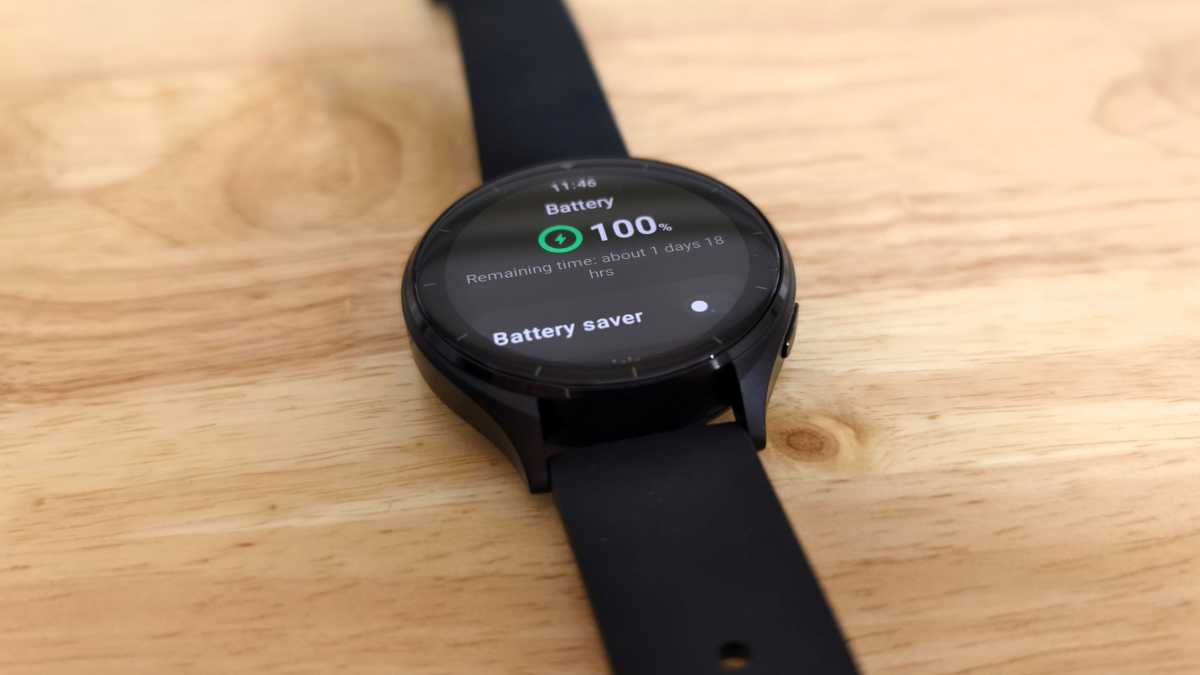
Anyron Copeman / Foundry
If you plan to track a workout and your sleep, there’s a real chance it’ll run out of charge before you wake up the next morning, leading to incomplete data.
Xiaomi claims up to 65 hours of battery life, but that’s presumably with brightness kept low and key settings such as GPS turned off. Basically, to get good battery life from the Watch 2, you’ll have to either barely use it during the day or make do without some features. Both are far from ideal.
To get good battery life from the Watch 2, you’ll have to either barely use it during the day or make do without some features
However, one redeeming quality is that charging is so fast. Xiaomi uses a proprietary magnetic charger with USB-A, and it went from 0-100% in just under 35 minutes. If you need a quick top-up, it reached 54% in just 15 minutes.
Price & Availability
Given everything you’re getting here, the Xiaomi Watch 2 is impressively affordable.
It costs just £169.99 from the Xiaomi UK website. As with all Xiaomi products, it’s unavailable in the US, but you might be able to import one.
Nonetheless, it’s very competitively priced. The Xiaomi Watch 2 is significantly cheaper than the Watch 2 Pro (£239.99), which itself costs less than the Samsung Galaxy Watch 6 (£289/$299.99), OnePlus Watch 2 (£299/$299), Mobvoi TicWatch Pro 5 (£329.99/$349.99), Google Pixel Watch 2 (£349/$349) and Samsung Galaxy Watch 6 Classic (£369/$399.99).
Essentially, if you want a competent Wear OS smartwatch, it doesn’t really get cheaper than this. See more alternatives in our guide to the best smartwatches.
Should you buy the Xiaomi Watch 2?
Possibly, but only if you can put up with its two major flaws: poor heart rate tracking and underwhelming battery life.
The Xiaomi Watch 2 has got a lot going for it, from near flagship-level performance to an excellent 1.43-inch display. Google’s Wear OS software runs very smoothly overall, offering access to Google and other third-party apps that you simply don’t usually get on a cheap smartwatch.
Tons of workouts and sleep can be tracked (though not automatically), and there’s an impressive amount of data available via the intuitive companion app. I just wish I could trust all the results I was presented with – so much of it relies on heart rate data.
If you like a watch to fit snugly to your wrist and don’t mind charging it regularly, the Watch 2 is a good choice – especially at this price. But if that’s not the case, you’re better off spending just a bit more for a better all-round experience.
Specs
- 1.43-inch, 466×466 (46mm) circular AMOLED always-on display
- Qualcomm Snapdragon W5+ Gen 1 processor
- 2GB RAM
- 32GB storage
- Wear OS 3.5
- Bluetooth 5.2
- NFC
- GPS
- Wi-Fi
- Microphone
- Speaker
- Heart rate sensor
- Blood oxygen sensor
- Barometer
- Accelerometer
- Gyroscope
- Compass
- Google Assistant
- Google Pay
- Support for 150+ workouts
- Sleep tracking
- 5ATM water resistance
- Wireless charging
- 495mAh battery
- 47.6 x 45.9 x 11.8 mm (46mm case)
- Colours: Black, Silver
- Compatible with Android 8.0 or higher




